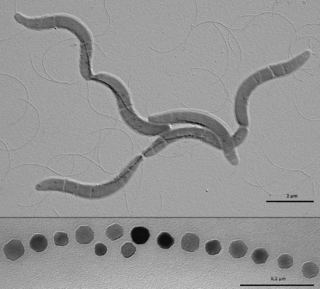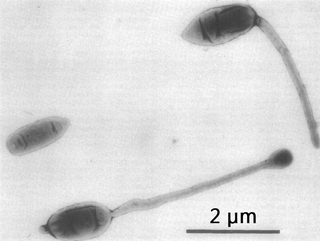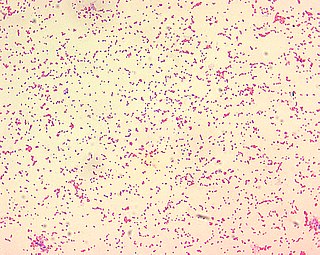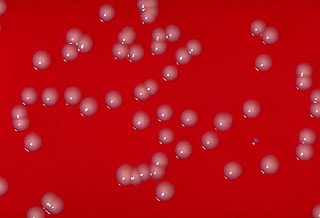| Stappiaceae | |
|---|---|
| Scientific classification | |
| Domain: | Bacteria |
| Phylum: | Pseudomonadota |
| Class: | Alphaproteobacteria |
| Order: | Hyphomicrobiales |
| Family: | Stappiaceae Hördt et al. 2020 [1] |
| Genera [2] | |
| |
| Synonyms | |
| |
Stappiaceae is a family of Alphaproteobacteria.
| Stappiaceae | |
|---|---|
| Scientific classification | |
| Domain: | Bacteria |
| Phylum: | Pseudomonadota |
| Class: | Alphaproteobacteria |
| Order: | Hyphomicrobiales |
| Family: | Stappiaceae Hördt et al. 2020 [1] |
| Genera [2] | |
| |
| Synonyms | |
| |
Stappiaceae is a family of Alphaproteobacteria.
The currently accepted taxonomy is based on the List of Prokaryotic names with Standing in Nomenclature (LPSN). [2] The phylogeny is based on whole-genome analysis. [1]
| |||||||||||||||||||||||||

The Rhodospirillales are an order of Pseudomonadota.
The Phyllobacteriaceae are a family of bacteria. The most common genus is Mesorhizobium which contains some of the rhizobia species.
The Aurantimonadaceae are a small family of marine bacteria.

The Hyphomicrobiaceae are a family of bacteria. Among others, they include Rhodomicrobium, a genus of purple bacteria.

The Brucellaceae are a family of the Gram-negative Hyphomicrobiales. They are named after Sir David Bruce, a Scottish microbiologist. They are aerobic chemoorganotrophes. The family comprises pathogen and soil bacteria
The Coriobacteriales are an order of Actinomycetota.
The Nitrobacteraceae are a family of gram-negative, aerobic bacteria. They include plant-associated bacteria such as Bradyrhizobium, a genus of rhizobia associated with some legumes. It also contains animal-associated bacteria such as Afipia felis, formerly thought to cause cat-scratch disease. Others are free-living, such as Rhodopseudomonas, a purple bacterium found in marine water and soils. The strain Rhodopseudomonas palustris DX-1 can generate an electric current with no hydrogen production, a trait being explored in the development of the microbial fuel cell. The genus Afipia has also been found in the atmosphere, where it uses methylsulfonylmethane as a carbon source.
The Kineosporiaceae is a family of Gram positive bacteria.
Devosiaceae is a family of Alphaproteobacteria.
Kaistiaceae is a family of Alphaproteobacteria.
Tepidamorphaceae is a family of Alphaproteobacteria.
Pleomorphomonadaceae is a family of Alphaproteobacteria.
Amorphaceae is a family of Alphaproteobacteria.
Ahrensiaceae is a family of Alphaproteobacteria.
Parvibaculaceae is a family of Alphaproteobacteria.
Methylorubrum is a genus of bacteria from the family Methylobacteriaceae.

The Mycobacteriales are an order of bacteria.
The Streptosporangiales are an order of bacteria.
The Propionibacteriales are an order of bacteria.
Balneolales is an order of bacteria.